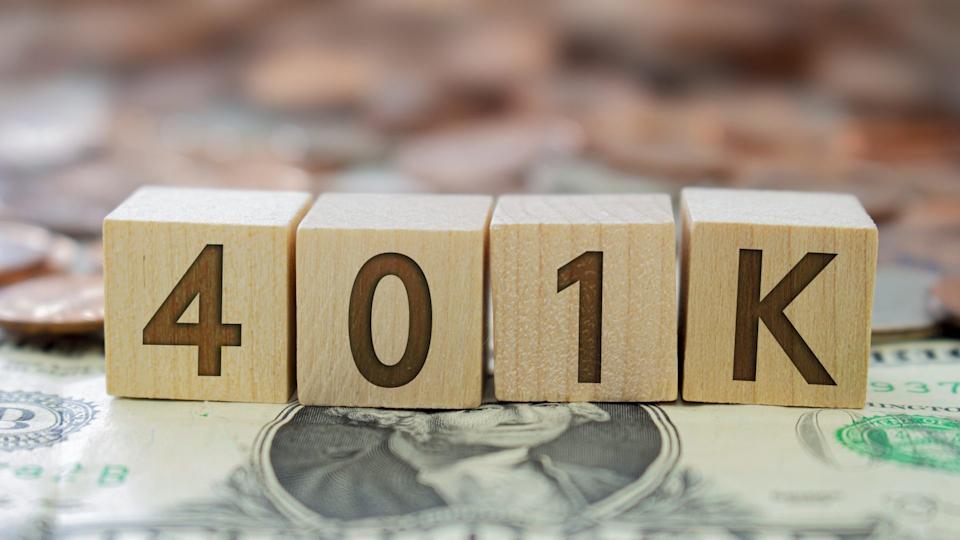How Much People Have in Their 401(k) Plans at Different Income Levels

With many employers no longer offering extensive pension packages, most Americans are forced to become more financially savvy when it comes to retirement. Money, once shrouded in mystery and considered a taboo subject, is now being discussed at the dinner table. These conversations help people improve their financial literacy and ensure that they understand the importance of saving money and doing so as early as possible.
Find Out: Retirement Planning: How Much the Average Person Under 70 Spends Monthly
Read More: The Surprising Way You Can Get Guaranteed Retirement Income for Life
As barriers to investing continue to be lifted, experts find that Americans are saving more and better preparing themselves for the future. Vanguard, one of the world’s leading investment management companies, found that the average 401(k) plan participant’s total savings rate in 2023 was 11.7% when combined with employer contributions. This matched the record-highs set the previous year.
When it comes to retirement savings, however, it can be challenging to know if you are on the right track. Now you can see if your nest egg is on par with other Americans. See how much people have in their 401(k) plans at different income levels and what you can do to measure up.
Wealthy people know the best money secrets. Learn how to copy them.
Median 401(k) Plan Account Balance by Income
According to Vanguard’s extensive research in “How America Saves 2024,” median account balances rose 29%. These increases were likely due to a number of factors, but auto-enrollment plans, more accessible financial advice and easier long-term investing tools were strong catalysts.
The data revealed that the average 401(k) account balance was $134,128, while the median account balance among all participants was $35,286. Account balances, however, varied significantly by income.
Median 401(k) plan account balance by income:
$3,691
$15,000-$29,999: $6,142
$30,000-$49,999: $10,072
$50,000-$74,999: $24,939
$75,000-$99,999: $51,073
$100,000-$149,999: $91,323
$150,000+: $188,678
Age, gender and job tenure also significantly influenced a participant’s defined contribution plan balance. For instance, men had an average account balance of $157,489, while women had an average balance of $112,401.
Learn More: I’m a Financial Planner: What a Trump Win in November Would Mean for Your Retirement Savings
What You’ll Need To Retire Comfortably
Many studies show that average retirement savings may not be enough. Northwestern Mutual’s 2024 Planning & Progress Study found that people believe they will need $1.46 million to retire comfortably in the United States. This number represents a more than 50% increase from the $951,000 people believed they would need in 2020.
This amount varied slightly by generation, with both Gen Z and millennials expecting to need over $1.6 million to live at or near their pre-retirement lifestyle. Boomers felt they could retire comfortably with $990,000, while high-net-worth individuals (people with more than $1 million in investable assets) said they would require almost $4 million.
The survey found huge disparities between the amount that respondents felt they needed to save in order to retire comfortably and their actual retirement savings. In 2024, the average amount saved for retirement (from all sources including 401(k), IRA, pension, bank accounts, etc.) was $88,400, around $1.37 million off the goal.
Steps To Take To Bolster Savings
For those concerned with whether they have set aside enough money to retire comfortably, there is good news. First, you are not alone. An astounding 43% of the Northwestern Mutual respondents believed that they could be at risk of outliving their savings. Second, there are steps that you can take to meet your retirement goals.
One-quarter of respondents said that they increased their savings in an effort to decrease the gap between what they have set aside now and what they hope to have down the road. Others have sought professional advice or initiated a financial plan to help them get on track for the future.
More people are also becoming more knowledgeable about ways to reduce their tax burdens during retirement. Of the 30% of respondents who said they had a plan to minimize the taxes they pay on their retirement savings, nearly one-third said they would make strategic withdrawals from traditional and Roth accounts, and 23% responded they would use a health savings account (HSA) or other tax-advantaged HC account.
The important thing is to address these shortcomings as early as possible. The younger you are, the more time you have to rectify deficiencies in your retirement savings and take advantage of compounding interest.
More From GOBankingRates
8 Rare Coins Worth Millions That Are Highly Coveted by Coin Collectors
Housing Market 2024: Home Prices Are Plummeting in 10 Formerly Overpriced Housing Markets
This is The Single Most Overlooked Tool for Becoming Debt-Free
This article originally appeared on GOBankingRates.com: How Much People Have in Their 401(k) Plans at Different Income Levels

 Yahoo Finance
Yahoo Finance 